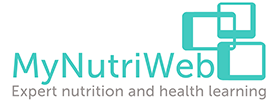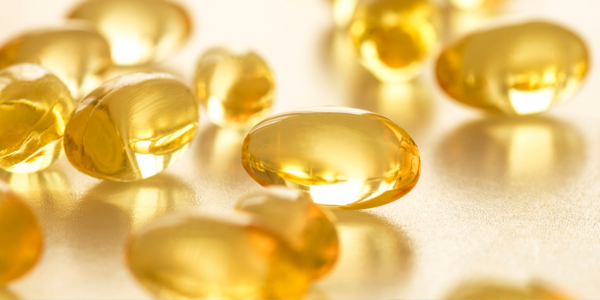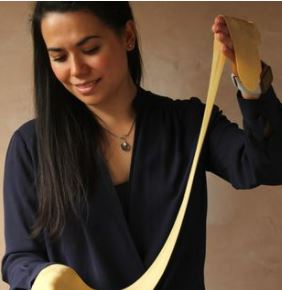Dr Pippa Gibson explores the role of vitamin D as we enter the colder months. This blog includes an understanding of the importance of vitamin D in the body and tips for ensuring we are getting enough. Recommendations for supplementation are provided as well as an interesting look at mushrooms as a source of the sunshine vitamin, as well as a delicious recipe for mushrooms on toast!
As we enter the Autumn and Winter months of the year, we lose our natural ability to make vitamin D from skin exposure to sunlight. In the UK, this is from October through March where the sun’s zenith angle is too low to allow for the spontaneous transformation of 7-dehydrocholesterol to pre-vitamin D31, which is then converted to vitamin D3. We therefore, should be looking at alternative ways to maintain our vitamin D status through our diets, including the importance of supplementation during winter months. There are however, alternative sources to supplementation, if you want to further ensure your vitamin D status remains within the healthy range during the darker days.
We need vitamin D to help maintain healthy bones and teeth as it helps with calcium and phosphate regulation, enhancing calcium absorption in the gut, and resorption of filtered calcium in the kidney, enabling it to be safely stored in the bones as part of bone mineralisation. Without adequate levels of vitamin D, our body is not able to properly store the calcium in the bones, which can lead to softer bones, known as rickets, in childhood, or osteomalacia in adults1. In later life, it is possible to develop osteoporosis where the bone structure becomes weakened due to lower bone density, resulting in an increased risk of fracture. Aside from our bones, vitamin D also plays a role in the regulation of our immune system, cancer, type 2 diabetes mellitus (T2DM) and allergies to name a few1,2.
How much vitamin D should I be taking?
The Scientific Advisory Committee on Nutrition (SACN) recently updated their recommendation in 2016 to 10 micrograms (µg)/day for the general population aged 4 years and older in order to maintain serum 25(OH)D levels ≥25nmol/l, the cut off level for vitamin D deficiency in the UK3.
This is equivalent to 400 International Units (IU)/day. The National Health Service (NHS) recommends that the general population should supplement with 10µg/day between the months of October – March to cover the Autumn and Winter period to help prevent vitamin D insufficiency or deficiency in the UK4.
Adults at risk of low levels of vitamin D include:
- Those with limited sunlight exposure e.g., the housebound, night shift workers
- Those in an institution (such as a care/nursing home)
- Those who wear clothes that cover up most of their skin whilst outdoors
- Those who are pregnant or breastfeeding
- Those aged over 65 years
- People with darker skin tones, including those from Black and Minority Ethnic (BAME) backgrounds
Those in the above high-risk groups, should consider taking a daily vitamin D supplement of 10µg all year round5.
Does it matter what type of vitamin D I supplement with?
Vitamin D is also known as cholecalciferol (vitamin D3) or ergocalciferol (vitamin D2), with these two sub types generally deriving from animal and plant sources respectively. In a large UK-based randomised controlled trial investigating the types of vitamin D, researchers found that D3 supplementation was more effective at raising blood 25(OH)D levels in comparison to D2 at 15µg/day6.
Historically, vegetarian and vegan sources of Vitamin D were typically D2, as D3 was derived from lanolin, an oil found on sheep’s wool. There are now good products providing vegan D3, derived from lichen (a vegan-friendly source), so be sure to check the packet for nutritional information to make sure you get more bang for your buck.
Dietary sources of vitamin D
Dietary sources of vitamin D can either be found naturally in certain foods, or through fortification where vitamin D is added to a food product to improve the nutritional profile. This can be either D2 or D3, but is most commonly D2.
The British Dietetic Association (BDA) states the following as sources of vitamin D5:
- Oily fish (such as sardines, salmon, kippers and trout): contains reasonable amounts of vitamin D
- Cod liver oil: contains a lot of vitamin D but is to be avoided in pregnancy
- Eggs (in the yolk), meat, offal and milk: contain small amounts of vitamin D but this varies during the seasons. For milk, it is worth also noting the following advice from the NHS4:‘ In the UK, cows’ milk is generally not a good source of vitamin D because it is not fortified, as it is in some other countries.’
- Fortified foods: margarine, certain breakfast cereals, certain yoghurts, and fortified plant-based dairy alternatives. Check the label to be sure of amounts.
Infant formula is often fortified with vitamin D, and therefore babies who are exclusively breastfed, or consume less than 500ml formula per day, are recommended to supplement 8.5-10 µg/day as a precaution4.
Within the SACN report on Vitamin D and Health2, the contribution of such dietary sources in the UK to vitamin D intakes is included, highlighting which sources are the major contributors to different age groups.
Interesting, sun-dried and UVB irradiated mushrooms are the only non-animal-based food product with substantial amounts of bioavailable vitamin D2 and, as such, have the potential to be a primary source of vitamin D in a vegetarian and vegan diet.
Most fresh-grown retail mushrooms in the UK are grown in dark, temperature-controlled rooms before being refrigerated and transported. Thus, the vitamin D2 content of most mushrooms sold is commonly less than 1μg/100g fresh weight (FW), and therefore the typical serving of mushrooms is negligible.
When mushrooms are directly exposed to midday sunlight for 15-120 minutes, they can generate significant amounts of vitamin D2 (<10μg/100g FW) which approaches the recommendation for the UK which is set at 10μg/day. However, the total amount of vitamin D generated in these mushrooms is dependent on many factors, such as length of exposure, time of exposure, the surface area exposed, and weather. Increasing the surface area by slicing the mushrooms to expose more flesh can increase vitamin D production. Additionally, certain species of mushrooms will produce more vitamin D if the gills are exposed.
Commercially produced vitamin D mushrooms are exposed to specific UV radiation in the growing and/or post-harvest phase. Fresh mushrooms deliberately exposed to UV light post-harvest can produce vitamin D2 levels up to 320μg/100 FW (calculated from dried weight).
In contrast, wild mushrooms are naturally exposed to UV light and therefore contain vitamin D2, as are sun-dried mushrooms. Both wild and sun-dried mushrooms contain significant amounts of vitamin D27.
Closely related to mushrooms, baker’s yeast can synthesise vitamin D2 when exposed to UVB light. In a clinical trial, vitamin D deficient rats demonstrated a dose-response to increasing concentrations of vitamin D as measured by plasma 25(OH)D levels8.
However, results from human clinical trial9 and a further animal10 study demonstrated poor bioavailability of D2 in UVB exposed yeast bread, highlighting the need for further research into this area before relying on this novel food as a source of vitamin D.
Vitamin D also has strong links with those with a more athletic lifestyle, with recent research highlighting a low vitamin D status can negatively impact aerobic fitness in university-ages students11.
Separately, in a recent systematic review, vitamin D supplementation of 2000 IU/day for more than a week appeared to be an effective strategy to reduce muscle damage and inflammation after exercise12. While further research is needed in this area, it further adds to the notion that vitamin D is important for more than just your bone health.
Summary
Recipe – Mushrooms on Toast
Ingredients
- 10g rapeseed oil
- 100g vitamin D mushrooms
- 1 tbsp plain flour
- 1 tbsp mushroom ketchup
- 150ml unsweetened fortified soya plant-based alternative to milk
- 1 slice of toast
Method
- In a saucepan, heat the oil and fry the mushrooms until they release all their juices and they evaporate off
- Add the flour and mix into the mushrooms before adding the mushroom ketchup. Add the soya plant-based alternative to milk in a little bit at a time, stirring continuously to get a smooth sauce
- Once all the soya plant-based alternative to milk has been added, cook for a couple of minutes before serving piled high on a slice of toast
Per serving: 409kcal/ 14g fat/ 1.6g saturated fat/ 56g carbohydrates/ 3.8g fibre/ 15g protein/ 6.2μg vitamin D2

Mushrooms on Toast. Photography by Dr Pippa Gibson.
Useful Resources:









Very helpful update thank you.
Are there any specific dietary recommendations or lifestyle changes suggested for these high-risk groups to naturally increase their vitamin D intake, in addition to supplementation? Tel U
Reply from Pippa Gibson:
Everyone (aged 4 to 65 years and healthy) in the UK is recommended to take 10ug per day as a supplement as general guidance. There are some specific populations and conditions where your medical team will recommend a higher dose so please do follow this guidance, and if you are not sure if this applies to you, speak to your GP or registered health professional to check. Your GP can test your vitamin D status to make sure you are within range.
We know that dietary sources of vitamin D are few and far between, which is why there is the recommendation to supplement the diet. However, the following foods contain Vitamin D:
Fortified plant-based alternatives such as oat milk and soya yoghurt – check the label for vitamin D
UVB irradiated mushrooms – only those which state they contain Vitamin D will contain vitamin D. If you expose your mushrooms to direct sunlight (i.e. outdoors) they can make vitamin D, but we wouldn’t know the exact amount generated)
Biofortified eggs – these will be eggs where chickens have been fed specially formulated chicken feed which has a higher amount of vitamin D which can be measured in the eggs. Again, check the label.
Oily fish such as salmon, mackerel, herring and sardines
Fortified cereals – check the label for vitamin D
Offal such as liver and kidneys (and products made using these)
Including some of these foods in your diet will help increase your vitamin D levels in conjunction with daily supplementation.
Alternative ways you can increase your vitamin D is to expose your skin to sunlight between April – September (in the UK) before you put suncream on. Exposing hands and face for 10 minutes per day is enough to allow your body to generate enough vitamin D for the day in healthy populations. Longer exposure isn’t recommended due to the risk of skin cancer, so if you are in a high-risk group you may continue supplementation with 10ug/d vitamin D throughout the Spring and Summer months.
It was insightful, thank you.